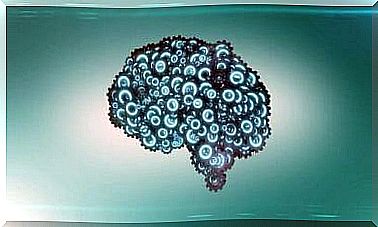Methylphenidate, Stimulant Drug

Stimulant drugs, such as methylphenidate, activate the vigilance system of the central nervous system. They are currently the most widely used and effective drugs to treat the symptoms of disorders such as ADHD and narcolepsy.
Methylphenidate is a central nervous system stimulating psychotropic drug. It acts in particular on the psychic, mental and behavioral activity, less on the motor one.
It was approved in the 1980s. It has since become one of the most widely studied and prescribed drugs for both children and adults. It is marketed as Ritalin, Equasym, Medikinet, and other names.
Chemically, it is a derivative of piperidine and is related to amphetamine. Most of the formulations are a racemic mixture of two isomers:
- d-right-, responsible for the therapeutic effect.
- l-levo-, linked to the appearance of cardiovascular and anorectic side effects.
In which cases is methylphenidate used?
Methylphenidate is indicated in the treatment of ADHD as part of a treatment program. It can be used in children from 6 years of age, as well as in adolescents or adults when other measures are ineffective or insufficient.
Treatment must be preceded by an exact diagnosis of the disorder. This refers to the criteria of the Diagnostic and Statistical Manual of Mental Disorders (DSM-5), and to clinical practice guidelines.

The methylphenidate is sometimes used improperly to improve intellectual performance. In this case, the stimulating effect is used to increase concentration, memory or motivation without considering the side effects and risks.
Abuse of this type of drug can lead to severe addiction and more intense side effects. It should therefore not be taken without a specialist’s prescription or without supervision.
Methylphenidate is currently also used in the treatment of narcolepsy. The latter is a sleep disorder that causes excessive daytime sleepiness and sudden sleep attacks.
ADHD
ADHD is one of the most diagnosed and treated childhood psychiatric disorders today. There is heated debate about its existence as a clinical entity. The main features are:
- Attention deficit, hyperactivity and / or impulsivity.
- It tends to appear at an early age, before the age of 12.
- It significantly reduces school and work performance, as well as interfering with family or social life.
- It has higher intensity and frequency in children.
- It is not caused by any other medical, toxicological or psychiatric disorder.
However, this is not an exclusively pediatric disorder; it can also occur in adults, currently with increasing frequency. In Italy, the prevalence of ADHD in adults varies from 2.8% to 7.3%.
In the drug treatment of this disorder, methylphenidate is the most prescribed drug. Some studies ensure a good response to treatment in up to 70% of patients.
Mechanism of action of methylphenidate
The mechanism of action is not yet fully understood. It is believed to amplify neurotransmission by acting in two main ways:
- Blocking the reuptake of norepinephrine and dopamine in presynaptic neurons, through the inhibition of transporters.
- By increasing the amount of monoamines available in the synaptic space.
Unlike amphetamines, it does not increase the release of monoamines, it only blocks reuptake. This mechanism of action is similar to that of cocaine.
Thus, it increases the degree of alertness of the CNS and releases the desired effects: improvement in sustained attention and increased alertness. It also facilitates concentration and reduces motor impulses.

Side effects
The most common undesirable reactions in methylphenidate treatment are:
- Insomnia.
- Nervousness.
- Headache.
Other side effects can be :
- Anorexia.
- Decreased appetite.
- Weight loss.
- Emotional instability.
- Abnormal behavior.
- Dizziness.
- Tachycardia.
- Hypertension.
- Abdominal pain.
- Gastric disturbances.
- Itching and hives.
It is recommended to start treatment with a low dosage. It can later be increased, based on the effectiveness of the drug, but also based on the patient’s tolerance and whether or not side effects occur.
It is important that treatment is monitored and tailored to each patient, as therapy may be prolonged over time. Treatment often needs to be continued through adolescence or even into adulthood.
During methylphenidate therapy it is important to inform your doctor if any adverse reactions are noted. This, in fact, makes it possible to update the risk / benefit ratio and to predict its long-term effectiveness.








